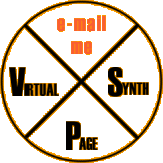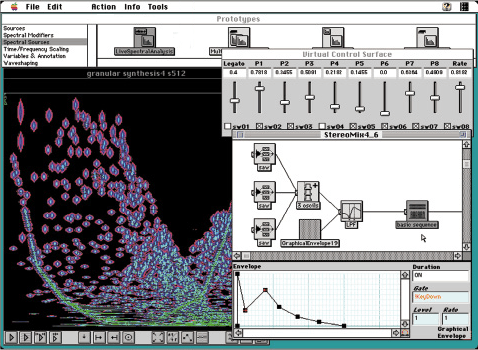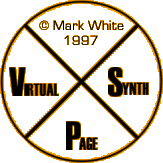

Kyma
Kyma is a truly stunning program. It is an hardware-accelerated modular synth. Kyma consists of a software package and a black box called the Capybara/66. This box can contain from 2-8 cards each with a Motorala 56002 digital signal processor and 3 megs sample RAM. It also has audio and MIDI in and out. The Capybara connects to the PC through an ISA or PCI card (though a PC Card for portables is also available), and options include extra sample RAM and digital inputs/outputs. The software is available for PC and Mac. Kyma is quite established and has been even been used in films. It seems to have every feature possible and a few more.
Kyma has an amazing variety of modules including:
- Standard oscillators
- Osciallator bank
- Realtime audio input
- Sample input (from RAM or hard disk)
- Pulse generator
- Sample and hold
- Envelopes
- Filters (including harmonic resonator, graphic EQ, low pass filter)
- Time and frequency scaling
- Effects (delay, reverb)
- Distortion/waveshaper
- Mixer
- Feedback loop
- Realtime oscilloscope/spectrum analyser
- Arithmetic operators
- Algorithmic sound construction (e.g. scripts)
- Granular synthesis for creating sonic backgrounds/textures (this was described by Curtis Roads June '97 Keyboard magazine as clouds of sound created by streaming or scattering acoustic particles in time and in space)
- Analog sequencer - including nested sequencers with feedback between each other (!!)
- Real-time graphical spectrum editor
- Group Additive analysis - takes a spectrum with hundreds of sine wave oscillators and reduces it so it can be resynthesized with 3 or 4 oscillators with complex waveforms and envelopes.
- Resonator-excitor analysis - takes a sample and turns it into a time-varying filter (for cross-synthesis with other sounds)
- Microtuning
- 22 to 88-band vocoder
- RE (resonator-exciter) analysis and synthesis - similar to a vocoder, but the analysis is done first then it is applied in real-time. This allows different effects to be achieved.
- Additive synthesis with 100 - 450 sine wave oscillators (synthetic spectra or spectra from analysis)
- Cross-synthesis
- Spectral morphing with realtime independent control over the rate of frequency and amplitude morphing.
- Spectral analysis - lets you take any sound, analyze its spectrum, and resynthesize it using classical additive sine wave synthesis all in real time. It is even possible to place modules in the middle to modify the spectrum before it is resynthesized.
- Formant-bank synthesis




